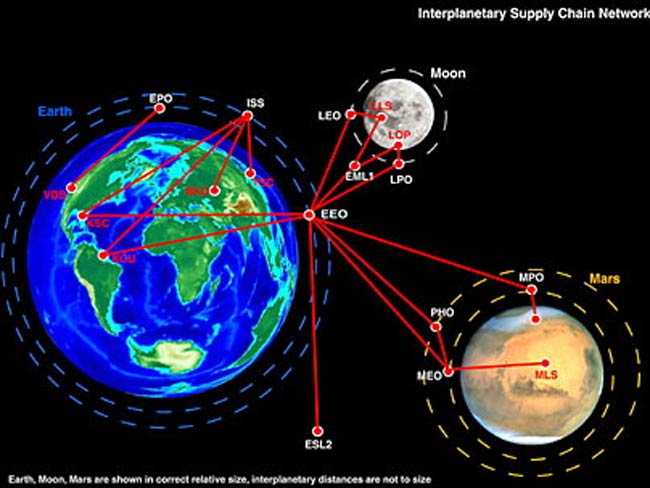Packing for the Moon: New Software Aims to Track Supplies

If anouthouse on the Moon ran out of toilet paper, an intrepid settler might have towaddle about 240,000 miles to get a fresh roll back on Earth.
To makesure that doesn't happen, scientists have developed a software tool that tracksand ensures a reliable stream of necessities from the Earth to the Moon.
Released thismonth, the computer model, called SpaceNet 1.3, will be critical, say thescientists, for establishing a human presence on the Moon by 2020, as laid outin the space visionby President George W. Bush in 2004.
"Thefurther away you get from Earth, theriskier it gets when there are failures of any equipment or shortages ofconsumables," said co-researcher Olivier de Weck of MIT. "There aren't manyback-up options."
De Weck andMIT's David Simchi-Levi developed SpaceNet. The software evaluates severalhypothetical missions to the Moon, with each building upon the previous. It'sset up as a network of nodes that represent either a source of materials, pointof consumption or transfer point for space exploration logistics.
Theresulting supply chain would operate similarly to the flow of materials onterra firma. But unlike Earth-based delivery service that can suffer delays ofhours or days, goods headed to the Mooncould easily be months late. Just witness the frequent delays in getting a shuttleto the International Space Station, which is just a little more than 200 milesaway. Plus, shipping capacity will be extremely limited for the expensive,three-day one-way trip to the Moon.
De Weck describes the dilemma in Earthly terms. "If I sent you on a one-monthtrip, and I said you can only pack what fits into your glove compartment, youwould probably still go," De Weck said, "but you'd have a really hard time topick what to take with you because there are all of these competing demands."
Get the Space.com Newsletter
Breaking space news, the latest updates on rocket launches, skywatching events and more!
To helpmake these decisions when packing the lunar version of a glove compartment, thescientists divided supplies into three categories: consumables--such as food,fuel and water--spare parts and exploration equipment. Like any packingvacationer, planners with limited space and delivery opportunities will have tomake difficult trade-offs between competing demands for each type ofsupply.
"Forexample, you could stay for a shorter time, have fewer crew days and bring moreequipment with you. Or you bring less equipment with you but then you staylonger, and that will require more consumables," De Weck said.
Thescientists will continue to refine and expand SpaceNet, which they say willultimately also include a Martianframework analogous to the lunar version of the software. In another project,De Weck said they are developing smart containers implanted with electronictags to keep track of each shipped item. Of course, the containers would havethe ability to signal to Earth when consumables, such as toilet paper, arerunning low.
- Top 10 Cool Moon Facts
- Images: NASA's New Spaceship
- Images: Future Vision: Lunar Base
Join our Space Forums to keep talking space on the latest missions, night sky and more! And if you have a news tip, correction or comment, let us know at: community@space.com.










